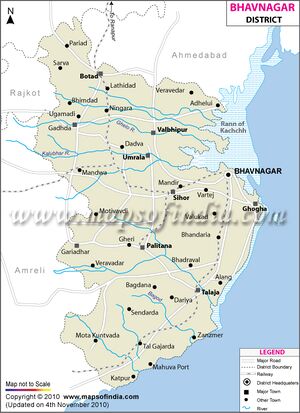Kerala-no-dhoro

Kerala-no-dhoro (केरलनोधोरो), also known as Padari (पादड़ी), in Bhavnagar district of Gujrat, is an archaeological site in Gujarat, India. It belongs to the Indus Valley Civilisation. It is located on the southern coast of Saurashtra region.[1]
Location
It is located in Padari, in Bhavanagar district of Gujrat, on the southern coast of Saurashtra region.
History
Hukum Singh Panwar (Pauria)[2] writes that Dr. Sandhya Kamble of the Archaeology Department, Deccan college, Pune (Indian Express, Sept. 9, 1992, p. 17, cols. 5-8) recovered from the excavation site at Padri in Bhavanagar district of Gujrat human figures with horned headgears similar to ones reported earlier from Kalibangan (Rajasthan), Mohanjodaro and Kot Diji (Pakistan).
The valuable findings of De Guines and Dr. Sandhya Kamble naturally lead us to conclusively decide that the Saka Tigarkhauda (Sakas with pointed head-gear, i.e. helmets) of Akhemenian, Byzantine and Greek Sources were none else but the descendents of the Sakas, as their cultural affinity warrants, of the Indus valley where from they migrated towards north-west after the desiccation of the valley or still earlier as the vanquished victims of the Rig Vedic Dasharajna wars.
The possibility can not be ruled out that the "human figures with horned headgears" of Dr.Sandhya Kamble and the Saka Tigarkhaudas of foreign writers were none else than the Visanins with horn-shaped helmets, who are the Sringala of the Harivamsa Purana (65, 15-20), the Sringin of Mahabharata (II, 47, 26) and the Visanins; of Rigveda (7, 18, 7), and who were the victims of Dasharajana wars. They might be among
The Jats:Their Origin, Antiquity and Migrations: End of p.183
the authors of Harappan culture. They are probably survived now by the Bisain or Basain and Vasan Jats in Panjab and Pakistan. The Sringalas may now be Singala Jats and Banias.
Site of Indus Valley Civilisation
Structures belonging to Early Harappan and Mature Harappan period were found in this site. A different type of pottery found in this place as well as at Somnath (Prabhas Patan), Loteshwar indicate an indigeneious tradition distinct from that of Amri-Nal, known from earlier occupations at Padri and Loteshwar (McIntosh, Jane).[3]
Copper fish hooks, of exceptionally big size are found here, indicating large fish were caught. Well made, sturdy storage jars were also found at this site, which were used for transporting salt. A jar found at this place is decorated with buffalo horn motif and with a large figure in a ragged skirt and wearing a pair of buffalo horns.[4]
In early Harappan levels of this site, symbols similar to Harappan writing were found and such writings were also found at Kalibangan and Dholavira.[5]
Structures: Rectangular houses, houses with rooms and workshops were constructed in Early Harappan Period. Houses constructed during Mature Harappan period were of mud bricks with floors being plastered with lime and dung; and these houses had storage spaces and hearths for cooking.[6]
Salt production: This unwalled village is thought have involved with production of salt, by evaporating sea water.[7]
External links
References
- ↑ McIntosh, Jane R. (2008). The Ancient Indus Valley : New Perspectives. Santa Barbara, California: ABC-CLIO. ISBN 9781576079072.p.221
- ↑ The Jats:Their Origin, Antiquity and Migrations/The Scythic origin of the Jats ,p.183-184
- ↑ McIntosh, Jane R. (2008). The Ancient Indus Valley : New Perspectives. Santa Barbara, California: ABC-CLIO. ISBN 9781576079072.p.74-221
- ↑ McIntosh, Jane R. (2008). The Ancient Indus Valley : New Perspectives. Santa Barbara, California: ABC-CLIO. ISBN 9781576079072.p.135-137
- ↑ Singh, Upinder (2008). A history of ancient and early medieval India : from the Stone Age to the 12th century. New Delhi: Pearson Education. p. 146. ISBN 9788131711200.
- ↑ McIntosh, Jane R. (2008). The Ancient Indus Valley : New Perspectives. Santa Barbara, California: ABC-CLIO. ISBN 9781576079072.p.74-221
- ↑ McIntosh, Jane R. (2008). The Ancient Indus Valley : New Perspectives. Santa Barbara, California: ABC-CLIO. ISBN 9781576079072.p.74-221
Back to Indus Valley Civilisation